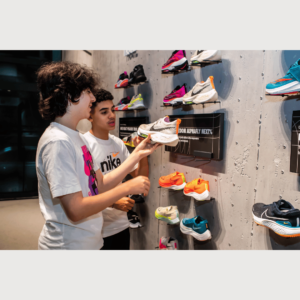
Zalphas: Navigating the Bridge Between Gen Z and Alpha
Introduction
Imagine a 12-year-old toggling between a Roblox game, editing a TikTok video, and checking out the latest skincare trends. She’s asking her mom for Robux currency for the game, a trendy Stanley Cup, a skincare fridge, and even dreams of a trip to Korea to experience K-pop firsthand. This child isn’t just tech-savvy—she’s part of the emerging “Zalpha” generation, born between the mid-2000s and early 2010s. Bridging the line between Generation Z and Generation Alpha, Zalphas bring together Gen Z’s social consciousness and Alpha’s digital immersion. For brands and market researchers, understanding this unique hybrid generation is key, as Zalphas are already influencing consumer trends and reshaping the future of commerce.
Who Are Zalphas?
Zalphas were born into a tech-heavy world. They’ve never known a time without smartphones, social media, and the internet at their fingertips, making them true digital natives. Growing up with immediate access to technology, they blend the tech-savvy activism of Gen Z with Alpha’s intense digital dependency. Their unique position as a bridge generation gives them traits that make them both familiar and distinct to those who study or cater to Generation Z and Alpha.

Key Traits of Zalphas:
As digital natives, Zalphas are constantly connected and highly proficient with technology, hopping seamlessly between multiple devices and platforms. Their comfort with these tools has given rise to a few defining characteristics:
- Tech-Savviness: Zalphas are adept at navigating new platforms, often juggling activities across devices. Their multitasking ability is second nature as they switch from gaming to social media in seconds.
- Quick Consumption: Platforms like TikTok and Instagram have conditioned Zalphas to consume content in bite-sized snippets. They expect information to be quick and engaging, favoring short, digestible media.
-
Value-Oriented: Growing up in an era of ethical awareness, Zalphas prioritize brands that reflect strong social and environmental values, placing authenticity and ethics at the core of their choices.
A Generation Comparison:
Although Zalphas share similarities with Gen Z, especially in their value-driven approach, they differ in their complete immersion in tech from birth. Generation Z grew up as technology was expanding, with smartphones becoming a fixture in their adolescence. Zalphas, on the other hand, were born into a world where digital devices were already ubiquitous, contributing to a level of tech fluency that’s a step beyond that of Gen Z.
Compared to Generation Alpha, Zalphas hold a unique position. Where Alpha is still developing its consumer personality, Zalphas have absorbed Gen Z’s social awareness and accountability but are more digitally attuned. In this way, Zalphas are a rare bridge between two influential generations, bringing together tech fluency, digital values, and high social expectations.
The Zalpha Approach to Buying:

Zalpha consumers are heavily influenced by social media, with platforms like TikTok, YouTube, and Instagram playing significant roles in shaping their buying habits. They often look to influencers and peer recommendations to guide their choices in fashion, tech, and gaming. Unlike previous generations, Zalphas demand ethical transparency and disengage quickly if a brand fails to meet these standards.
A hallmark of Zalpha consumer behavior is their attraction to gamified and AI-driven shopping experiences. They enjoy interactive, engaging shopping—whether through loyalty programs, in-app purchases, or virtual items on platforms like Roblox. Brands using AI to provide a personalized shopping experience are particularly appealing to Zalphas, as they crave real-time interaction and tailored content.
Influencers on Zalpha Buying Habits:
Several factors influence Zalphas’ consumer choices:
-
Influencers & Social Media: Popular content creators across platforms like TikTok, YouTube, and Instagram hold a strong sway over Zalphas’ preferences.
-
Peer Pressure: The need to align with popular trends in their friend groups and school communities influences what Zalphas buy and wear.
-
Parental Influence: Though independent in many ways, Zalphas are still financially dependent, especially for larger purchases.
-
Gamified Purchases: Virtual currencies like Robux and in-app purchases appeal to Zalphas’ love for interactive experiences.
Loyalty with Conditions:
While Zalphas care deeply about the values brands stand for, their loyalty can be fleeting if brands fall short. Brands that display transparency, sustainability, and inclusivity have a better chance of capturing Zalphas’ interest. They expect brands to openly communicate about sourcing, support diverse voices, and actively promote eco-friendly products. Failure to align with these expectations results in quick disengagement.
Zalpha Preferences in the Digital Space:

As a digital-first generation, Zalphas prefer brands that offer immersive, personalized interactions. They appreciate gamified engagement and loyalty programs that reward them for involvement. Platforms like Roblox and Minecraft are popular among Zalphas because they merge creativity with consumerism, allowing them to be both creators and consumers. Other important preferences include:
-
Personalization: Zalphas are drawn to brands that provide curated ads, custom shopping experiences, and tailored recommendations.
-
Instant Access: With a penchant for on-demand services, Zalphas prefer apps and streaming services that offer instant content.
The Global Reach of Zalphas:
Zalphas’ influence is global, but their consumer habits vary by region. For instance, in the US and UK, they’re heavily driven by social media trends, while in parts of Asia, like Japan, Korea, and China, Zalphas show a strong affinity for gaming and AI-powered entertainment. Here are a few regional nuances in Zalpha behavior:
-
United States & United Kingdom: Zalphas in these regions are socially and ethically conscious, with an interest in brands promoting eco-friendly products and inclusivity.
-
Asia: In countries like China, Japan, and Korea, Zalphas lean towards gamified shopping, virtual influencers, and tech-heavy products, with Korea’s K-pop culture further influencing local buying habits.
-
India: Mobile technology is central to Zalpha behavior here, with high engagement in online education and gaming.
-
Indonesia, Philippines, Vietnam, and Thailand: Social commerce, mobile-first shopping, and influencer marketing shape consumer choices in these regions, with quick delivery and on-demand access becoming increasingly popular.
Cultural Impact of Zalphas:
Despite their young age, Zalphas are already influencing cultural trends, both locally and globally. In Korea, brands partnering with K-pop stars or integrating popular beauty trends are thriving, while in the US, brands embracing sustainability and social causes find success. As Zalphas continue to grow, their unique blend of Gen Z activism and Alpha’s digital dependency will drive demand for authenticity, tech immersion, and personalized consumer experiences.
Conclusion:
For brands, understanding Zalphas now is not just about catering to a future market—it’s about staying relevant in a rapidly changing landscape. As Zalphas set new standards for consumer expectations, brands that resonate with their values will find themselves poised for success in the years to come.


